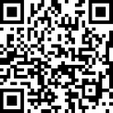血细胞
Blood cells, which can be seen under a microscope, make up about 40% of the blood's volume. Blood cells are made in the bone marrow by blood 'stem' cells. Blood cells are divided into three main types.
血细胞(血球)。从显微镜中观察,血细胞占躯体容量的40%左右,由骨髓中的血“干”细胞生成。血细胞可分成三大类:
Red cells (erythrocytes). These make blood a red colour. One drop of blood contains about five million red cells. Red cells contain a chemical called haemoglobin. This binds to oxygen, and takes oxygen from the lungs to all parts of the body. form www.med66.com
红细胞(红血球)。红细胞使血变红。一滴血约含500万红细胞。红细胞含有一种化学物质,叫血红蛋白,它与氧气结合,将氧气从肺部输送到全身各部分。
White cells (leucocytes). There are different types of white cells such as neutrophils, lymphocytes, eosinophils, monocytes, basophils. They are a part of the immune system and are mainly involved in combating infection.
白细胞(白血球)。白细胞分多种,如嗜中性粒细胞、淋巴细胞、嗜酸性细胞、单核细胞和嗜碱粒细胞等。为免疫系统一部分,其主要作用是抗感染。 医学教育网
Platelets. Platelet is a minute, irregularly shaped, disklike cytoplasmic body found in blood plasma that promotes blood clotting and has no definite nucleus, no DNA, and no hemoglobin. It is also called thrombocyte.
血小板:血小板为血浆中一小形、不规则形、盘状细胞质,可促进血液凝固,无细胞核,无DNA,也不含血红素。又称凝血细胞。










 扫一扫立即下载
扫一扫立即下载


